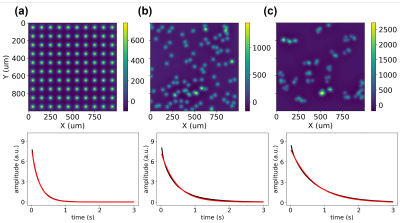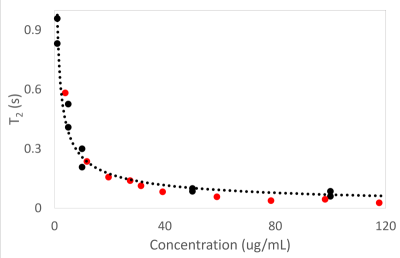Monte Carlo Simulation for Magnetic Nanoparticle Biosensors
Tristhal Parasram1, Rongsheng Lu2, Yi Chen2, and Dan Xiao1
1University of Windsor, Windsor, ON, Canada, 2Southeast University, Nanjing, China
A Monte Carlo simulation is developed to investigate the effectiveness of magnetic nanoparticle biosensors. This simulation will be employed to optimize the nanoparticle biosensor systems for a wide range of targets, including cancer cells and COVID virus.

Simulated magnetic field distribution (in Hz) and CPMG signals for (a) grid, (b) random, and (c) clustered nanoparticle configurations, with the same number of particles. The apparent T2 values were 0.2, 0.4 and 0.7s for (a), (b) and (c), respectively.

T2 relaxation times of different concentration iron nanoparticles in water. The red points are simulation results and the solid black points are experimentally acquired. The simulated bulk T2 of pure water was 2 s. 128 CPMG data points were acquired with 32000 diffusing water molecules.


